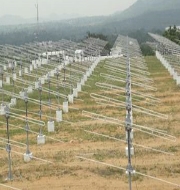ISRO establishes GIRI Radar System near Tirupati
The Indian Space Research Organisation (ISRO) has installed the Gadanki Ionospheric Radar Interferometer (GIRI) Radar System near Tirupati, Andhra Pradesh.
It was installed at the National Atmospheric Research Laboratory (NARL), which is an autonomous research institute of the Department of Space (DoS).
Features of GIRI Radar System
- Primary objective: Carry out unattended observations for studying the forcing from the sun like variation in solar flare, solar flux and magnetic storm on the ionospheric irregularities.
- Study unattended observations from the underneath atmosphere on the ionospheric irregularities (for e.g. waves generated by weather phenomena).
- Provide important information about the angular location of plasma irregularities during the onset phase. Also establish its relationship to background ionospheric state parameters and sunset terminator.
- Applications: Investigations made using this system are expected to improve the Equatorial Plasma Bubble (EPB) forecasting. It will further be detrimental for satellite based navigation/communication applications.
- Components: The GIRI has a 30 MHz radar system that will be engaged in meteor and space weather research.
- It consists of a rectangular antenna array of 160 two-element Yagi Uda-antenna. It will be arranged in a 20×8 matrix with 20 transmitter units. It also has 6 digital receivers including data processing systems, a host computer and a radar controller.
Month: Current Affairs - March, 2016


